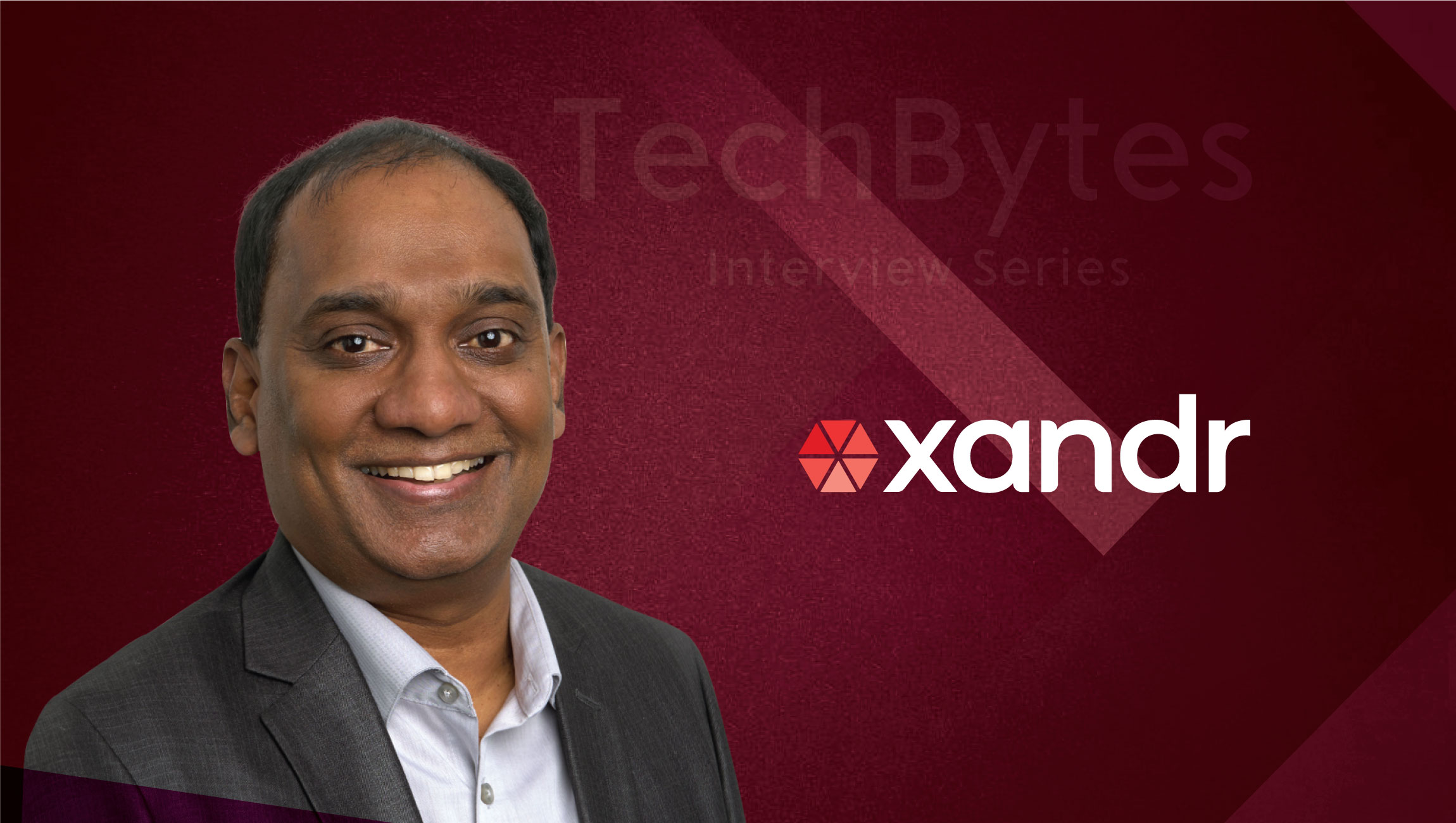Know Me
Hi Ben, please tell us about your journey in technology and how you started at Xandr. What inspired you to be part of a global digital advertising company?
I have always been fascinated by technology and its potential to transform or reimagine the status quo. While studying computer science 25 years ago, I realized theoretical knowledge is not enough to build a strong foundation. So, I launched a software company dedicated to building innovative software and providing employee training, which I ran for more than five years. This experience taught me foundational knowledge in software engineering and valuable lessons in leadership.
I was lucky to be part of the transformational journey technology was taking in enabling new business ideas when I took on several key technical leadership roles in transforming financial industry. Just some of the sectors I was able to touch include artificial intelligence and bots, automated trading, the automation of education and the initial introduction of e-commerce.
My emphasis on strong leadership skills and continual learning, coupled with my passion for technological innovation, has always driven me to seek challenging, new opportunities that allow me to impact and drive tangible change. This led me to join AppNexus, an independent adtech start up at the time, as VP of engineering in 2013. I soon after took on the role of CTO of AppNexus and worked with the leadership team following the company’s acquisition by AT&T and rebrand to Xandr. Now, as the CTO of Xandr, I am responsible for the company’s global technology organization, which includes overseeing its architecture, product development, and all other technological innovations, infrastructure and operations.
Now, I am lucky enough to be part of another transformational journey, but this time it’s content. Consumers are watching more content through more formats than ever before, and businesses are finding ways to provide the best consumer experience. Digital advertising is important for any marketer to be successful, and any content creator to monetize, without compromising the best consumer experience.
In this new landscape, my inspiration continues to stem from smart people working together as a team solving complex business and consumer problems leveraging technologies.
Tell us about the approach you built through AT&T acquisition and the recent AppNexus deal? How did you keep your team engaged and motivated?
Leading a team during a transition period is never easy. In order to make the transition as seamless as possible, the leadership team and I worked together to define clear goals for our company and ensure that we were effectively communicating those goals to our employees. In doing so, we asked ourselves 1) what type of culture and company do we want to build and 2) what problem are we looking to solve, and how are we uniquely positioned to solve it?
After much discussion, we found the answer was product-led company with an open and inclusive culture. In order to achieve this, we started operating in a nimble way, aligning systematic and organizational architecture very quickly while also organizing ourselves to operate on a capability-based model, allowing us to develop reusable product features quickly, independently when needed, and easily leverage components across platforms.
While quickly and efficiently creating products was a priority, so was retaining and growing our talent base. Fostering an engaging culture was critical. Workwise, we were intentional about giving employees the opportunity to solve complex problems in a fun and educational environment. Culturally, we were intentional about making sure employees were comfortable speaking up, facilitating conversations and participating in non-work-related activities like volunteer groups and attending key industry events.
Underlying across all of our efforts is the idea of collaboration. Across teams, offices and employee groups, collaboration was critical in bridging any gaps throughout the acquisition, keeping teams engaged and motivated. Ultimately, our efforts were incredibly successful. In 2019, we integrated multiple companies and platforms, including a new company, clypd. We supported our existing customers and products while continuing to build our customer base and introducing new products to the market. We also hired hundreds of engineers and built five new tech hubs and offices. Accomplishing all of these things in parallel is evidence that our approach is working, and has only amplified what we have identified as our unique position in the market: providing access to premium content, consumer insights, and a state-of-the-art technology platform that enables marketers to reach audiences across channels, and at scale, and for sellers to achieve better yield by aggregating inventory with other premium publishers.
There is so much noise around seismic shifts in adtech monetization tools and platforms. How do you lead your Technology team at Xandr in such a disruptive era with talent, inclusion and knowledge management?
Part of what makes our jobs in technology so exciting is the constant evolution of the tools and solutions being brought to the market. Like I mentioned before, we have organized ourselves to operate on a capability-based model. We’ve also built all of our core products to incorporate reusable platform elements. As a result, we’re able to develop products quickly and independently which helps us keep up with, and stay ahead of, many of the changes you see in the market.
At the same time, we take team management and the idea of community very seriously. It’s incredibly important to us that we protect the valuable aspects of our culture, and we’ve made this clear through our investment in people. What makes us different, when thinking about the big tech companies out there, is our commitment to the growth and careers of our people. We provide an array of training programs, and perhaps most importantly, we’ve invested in a learn and growth function within the technology group dedicated to training our managers on best practices for people management.
For us, it’s about laying the groundwork for success from both a technology and people standpoint. Taking one step at a time and actively including our employees throughout the process enables us to not only make some of the best products in the industry, but create a unified culture where people are excited to come to work every day.
You recently launched Xandr’s core products: Community, Xandr Invest and Xandr Monetize. What was your approach in building a totally new adtech platform from the scratch?
When AT&T initially acquired AppNexus, what they found most valuable was its global reach and industry leading advertising technology solutions – this still holds true today. What was so special about the integration between the two companies was our ability to layer these qualities on top of AT&T’s data insights, distribution and premium content.
When we set out to develop our core products, Community, Xandr Invest and Xandr Monetize, we integrated our already existing assets, and accelerated our new technology investments based on the needs of the market.
In doing so, we reviewed the needs of both advertisers and publishers as well as the evolving consumption habits of consumers around the world. We also conducted an industry audit to better understand what tools are already in market, and how we could introduce new solutions that would solve some of the most pressing challenges we’re seeing.
For buyers, it’s access to premium video content, effective cross-channel targeting solutions, transparency and scale. For publishers, it’s maintaining consumer attention, maximizing yield and offering a relatively simple user experience. All the while, consumers want relevant messaging and non-intrusive experiences. With this knowledge, we worked with our product teams to develop a roadmap of which our engineers could execute against quickly.
Each of our core products have been intentionally engineered to not only meet these current needs, but also the needs that each of these players will have in the future as TV and digital advertising begin to converge. We’re constantly working with cross-functional teams to better understand how we can be the best partner possible to the industry as a whole and will continue to do so as the market changes and evolves.
A very diverse range of customers use Xandr’s AdTech platform. What kind of customization or unique customer experience do you offer to these customers? Is CX part of your product development strategy?
We are always thinking about how we can better serve our customers, and a main component of this is creating a custom, simple and positive user experience. While this is true across our suite of products, we had a particular focus on this when developing Xandr Invest. The strategic buying platform’s customization capabilities make buying easier and more creative, so advertisers can transact however makes the most sense for their business and their goals.
At the same time, we introduced enhancements to our user experience by increasing customer support, also in an effort to allow buyers to be more strategic. In fact, one of the key metrics we measure against is how we’ll we’ve improved our customer experience. So far, we’ve integrated our platform with machine learning technologies that predict and measure campaign progress and customer experience so that we can consistently improve them. I am personally dedicated to reviewing our platform usage and providing the best customer experience.
What are your comments on the role of AI and Machine Learning in the digital adtech industry? Which other emerging technologies are disrupting the adtech product development scenario for you?
Technology like artificial intelligence and machine learning are only becoming more relevant to advertising, as automation continues to drive improvements and efficiencies across the industry. Our assets and technology have been critical in the development of powerful tools and data driven solutions for our customers, while our investments in machine learning and our programmable data science platform are already paying off through our advanced cross-screen advertising solutions and our ability to reach target audiences across screens.
Cloud technologies and built in AI and machine learning enables us to test and develop our products faster. While the scale and economics associated with cloud costs can make it difficult to keep up, building a hybrid cloud strategy that aligns with the business and product strategy is essential.
What kind of governance policies are we looking at to tackle issues with managing data that goes into your ad-tech engine? How can blockchain governance improve adtech media governance?
Xandr takes consumer privacy seriously and closely follows the development of new rules and regulations like GDPR in Europe and CCPA in the States. As such, we’re continuously updating our privacy program and building out our systems and platform controls to account for any anticipated regulatory requirements.
Additionally, we actively participate in various industry working groups to both enhance current and create new interoperable industry solutions, to meet these industry requirements. We believe that this kind of collaboration is critical, as the online advertising industry requires consistent standards and interoperability among the various platforms, vendors, and parties participating in the ecosystem.
Tag the one person in the industry whose answers to these questions you would love to read:
Jonathan Hsu, former CFO and COO of AppNexus, and current advisor at Xandr
Ben John, Chief Technology Officer, XandrAs Chief Technology Officer (CTO) of Xandr, Ben is responsible for the company’s global technology organization, which includes overseeing its architecture, product development, and all other technological innovations, infrastructure and operations.
Ben was named CTO of Xandr after holding several technical leadership roles at AppNexus including CTO, where he transformed the engineering organization and managed platform scaling to enterprise standards. Previously, he worked as an engineer for some of the most illustrious names in business, including Sun Microsystems and Citi, leading transformation of education and learning experience through technology at Kaplan, and helping develop the first Artificial Intelligence bots for the financial industry. Ben holds a Ph.D. in computer science, specializing in machine learning and big data mining, and is thrilled to continue learning from his colleagues and customers every day.
We are a collective with a common purpose: make advertising matter to brands and consumers alike. Leveraging the spirit of innovation that began with Alexander Graham Bell more than 140 years ago and has continued on as a part of AT&T’s legacy, we are uniquely positioned to move the industry forward.
With one of the world’s largest collections of digital, film and TV properties*, we provide a premium option for advertisers and publishers looking to reach specific audiences at scale in premium and brand-safe environments.
Our combined assets, including data insights, premium content, powerful technology, and scaled direct-to-consumer distribution, give us a competitive edge — helping to improve advertising for brands, publishers, and consumers.












